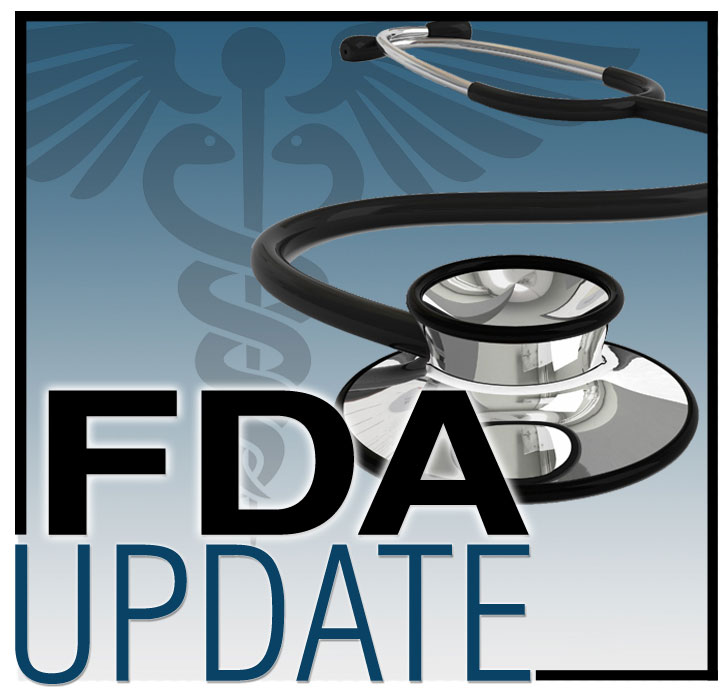On July 20, 2023, the U.S. Food and Drug Administration (FDA) approved quizartinib (Vanflyta®) in combination with standard cytarabine and anthracycline induction and cytarabine consolidation and as maintenance monotherapy following consolidation chemotherapy for the treatment of adult patients with newly diagnosed acute myeloid leukemia (AML) that are FLT3 internal tandem duplication (ITD)-positive, as detected by an FDA-approved test. FDA also approved the LeukoStrat CDx FLT3 variant assay as a companion diagnostic for quizartinib.

The efficacy of quizartinib with chemotherapy was evaluated in QuANTUM-First (NCT02668653), a randomized, double-blind, placebo-controlled trial of 539 patients with newly diagnosed FLT3 ITD-positive AML. FLT3-ITD status was determined prospectively with a clinical trial assay and verified retrospectively with the companion diagnostic LeukoStrat CDx FLT3 variant assay.
Patients were randomized 1:1 to receive quizartinib (n = 268) or placebo (n = 271) with induction and consolidation therapy and as maintenance monotherapy according to the initial assignment. Patients were not rerandomized at the initiation of postconsolidation therapy. Patients who proceeded to hematopoietic stem cell transplantation (HSCT) initiated maintenance therapy after HSCT recovery.
The main efficacy outcome measure was overall survival (OS), measured from the randomization date until death by any cause. Researchers conducted the primary analysis after a minimum follow-up of 24 months after they randomized the last patient. The trial demonstrated a statistically significant improvement in OS for the quizartinib arm [hazard ratio (HR) 0.78; 95% CI = 0.62, 0.98; 2‑sided p = 0.0324]. The complete remission (CR) rate in the quizartinib arm was 55% (95% CI = 48.7, 60.9) with a median duration of 38.6 months (95% CI = 21.9, not estimated), and the CR rate in those receiving placebo was 55% (95% CI = 49.2, 61.4) with a median duration of 12.4 months (95% CI = 8.8, 22.7).
Because improvement in OS with quizartinib as maintenance monotherapy following allogeneic HSCT was not demonstrated, it is only approved as maintenance monotherapy following consolidation chemotherapy.
Quizartinib has a boxed warning for QT prolongation, torsades de pointes, and cardiac arrest. It is available only through a restricted Vanflyta Risk Evaluation and Mitigation Strategy (REMS) program. See the prescribing information for a full list of adverse reactions.
The recommended quizartinib dose is as follows:
- Induction: 35.4 mg orally once daily on days 8–21 of “7 + 3” (cytarabine [100 or 200 mg/m2/day] on days 1–7 plus daunorubicin [60 mg/m2/day] or idarubicin [12 mg/m2/day] on days 1–3) and on days 8–21 or 6–19 of an optional second induction (“7 + 3” or “5 + 2” [5 days of cytarabine plus 2 days of daunorubicin or idarubicin], respectively).
- Consolidation: 35.4 mg orally once daily on days 6–19 of high‑dose cytarabine (1.5–3 g/m2 every 12 hours on days 1, 3, and 5) for up to 4 cycles.
- Maintenance: 26.5 mg orally once daily on days 1–14 and 53 mg once daily, thereafter, for up to thirty-six 28-day cycles.
View the full prescribing information for quizartinib.
The review used the Assessment Aid, a voluntary submission from the applicant to facilitate the FDA’s assessment.
The application was granted priority review, fast track designation, and orphan drug designation. FDA expedited programs are described in the Guidance for Industry: Expedited Programs for Serious Conditions—Drugs and Biologics.
Healthcare professionals should report all serious adverse events suspected to be associated with the use of any medicine and device to FDA’s MedWatch Reporting System or by calling 800-FDA-1088.
For assistance with single-patient investigational new drug applications, contact OCE’s Project Facilitate at 240-402-0004 or email OncProjectFacilitate@fda.hhs.gov.





